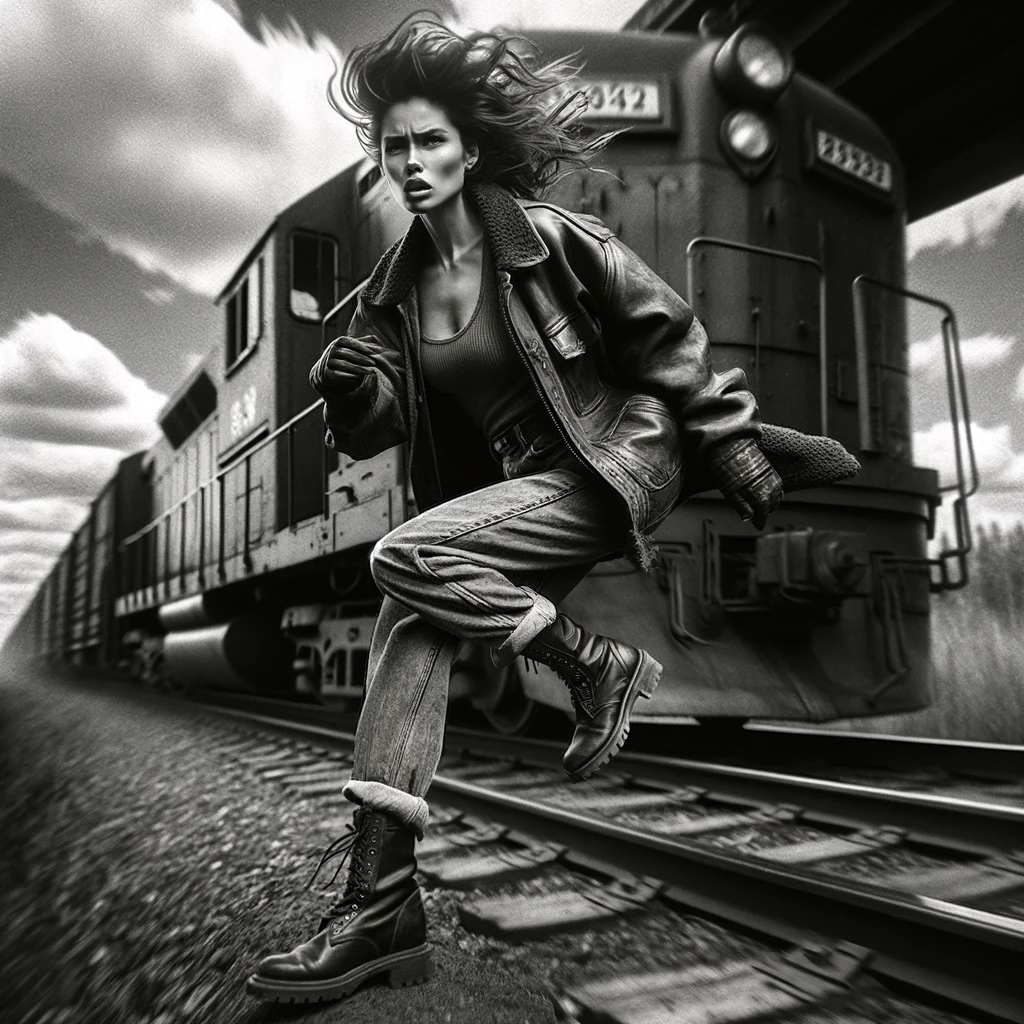
The Complete Guide to Train Hopping
A time honored mode of travel, with an exciting and vibrant history, is the practice known as "freight train hopping", or simply as "train hopping".
In the world that we live in, its admittedly more difficult to do many things we once used to and took for granted. One of these things is our ability to travel without Big Brother noting our whereabouts, you know, in the interest of "national security".

When we think of such things, age-old stereotypes, such as the lovable hobos in "Grapes of Wrath" come to mind. But looking at this critically, there are many things to be aware of when considering this anachronistic mode of travel, likely, the last truly anonymous one left.
When we speak of freighthopping, we are talking about secretly hopping on a railroad freight car. During the Great Depression, this became a standard mode of travel, as many Americans simply did not have train fare to travel by rail in search of a better life. Those riding the rails became known as "hobos".
Over the course of the 20th century, states began passing laws against the practice. But the fact that its illegal, doesn't stop people from "catching out", train-hopping.
Hobo Living - Freight Train Hopping in America - Freighthopping
Safety Concerns
Without sounding like captain obvious here, lets be clear, train hopping could get you killed or dismembered. This is especially so if one is doing this while intoxicated, overtired or in bad physical shape. It is otherwise every easy to get seriously injured. There are some things to watch out for and not to do:
- Watch out for the railroad security (aka, "the bull"). If you have ever seen the film, "Emperor of the North", Ernest Borgnine played a mean one in the character "Shack". (This film is worth seeing, both for reference and for entertainment). Watch for flashlights and listen to footsteps. Also keep an eye out for vehicles.
- Take extra precaution when train hopping in the winter. Ice and snow can exponentiate the danger.
- Be careful while walking. Don't walk on the tracks or cross under freight cars (thus crossing the tracks). A train can start rolling abruptly and get you caught.
- Be careful of who you talk to and associate with. There are well-known gangs who ride the rails, many of whom are fugitives. One such organization is the FTRA.
What to Take With You
- A cell phone. Make sure you have a camera on the phone and also have something like Qik.com, a free service that allows you to stream events such as this wherever they happen using your mobile phone. This could come in handy if there is trouble.
- Dark, warm, water/weatherproof clothing.
- Gloves, and a hat (maybe a good waterproof one like a Tilley).
- Good footwear with an excellent sole. You need to se 100% sure of your footing when freight hopping.
- Flashlight, lighter, candle - anything that helps you see and keep warm.
- A sleeping bag, if possible. You might be on a trip that could take you at great speeds across the country.
- Some non-perishable high protein snacks/foods. Protein bars, canned fish, peanut butter, beef jerky, meat sticks, anything like this can keep you nourished. Also bring bottled water.
- A Leatherman Multi-Tool or similar tool. Handy for eating, opening food packaging etc.
- A GPS or a map.
Where to Hop A Freight Train
Jumping on a train takes some planning and forethought. Your best bet is to get a hold of and study a map, which shows the rail lines, interstate.
Often the best place is to jump a train as it is coming out of the yard, just past where security can see. The tricky part is how fast they are going at that point.
You typically want to jump on a train when it is not moving, or hardly moving. Do not attempt to jump on one that you think is moving slow, as it might be faster than you think.
Be careful when trying to hop a plug door or intermodal car, as they are usually locked. If you get into one which is open on a stopped train, you may be locked in.
If you can pass as a student or someone doing "research" you could ask some of the workers in the yard where the trains are coming from and headed to. If they tell you, ask them, naively, how they know.
They just might tell you how the tracks in the yard are organized as far as routing goes.
The safest bet by far is to try to catch out a ride in open boxcars, in the spaces between flatbeds carrying cargo shipping containers. Do not ride a loaded flatcar or a loaded grainer, hopper or gondola. Also avoid tankers or any car carrying a load which could shift and injure you.
Again, whatever you do, please be careful and think before you act.
*Disclaimer: In most states and jurisdictions, doing this is considered against the law. This article is provided for purely entertainment and nostalgic purposes only.
more reading:
- Train Hopping 101
- Boxcar Killer
- Riding the Rails: PBS documentary about riding the rails in 1930s America
- Letters From Boxcar Boys And Girls Of The Great Depression
- YouTube - Trainsurfing Videos
- Freight Train Hopping In The USA
When we think of such things, age-old stereotypes, such as the lovable hobos in A cell phone. Make sure you have a camera on the phone and also have some sort of app that allows you to stream events, should you witness something happening. This could come in handy if there is trouble.

